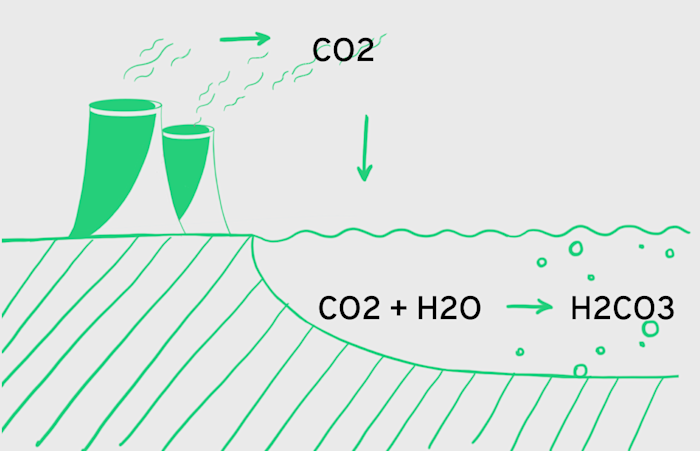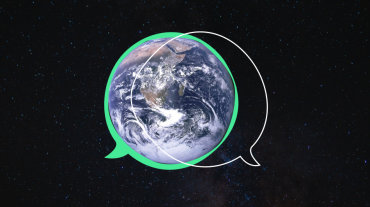How climate change is affecting our oceans and what we can do to help
When it comes to climate change, what happens in our waters is just as critical as what happens on dry land. Here’s how stopping climate change can protect our oceans — and how our oceans protect all of us.
You know the joke, Planet Earth should probably be called Planet Ocean. After all, 70% of our planet's surface is covered by water. Not only that, but oceans contain 97% of all water on Earth, produce half of all our oxygen, and play a massive role in regulating our climate.
Turns out, oceans aren’t just big — they’re a big deal when it comes to fighting climate change. Oceans are one of the world’s largest carbon sinks and have absorbed about 40% of the CO2 emissions since the beginning of the Industrial Revolution. Without them, we would have already seen runaway temperature rise and climate catastrophe.
Even today, estimates suggest that around a quarter of the CO2 emissions we generate each year are absorbed by oceans. That’s the good news. Now for the bad — our oceans can’t keep bailing us out forever. The more carbon we pump into the atmosphere, the more we change our waters, and the higher the risk to ourselves.
Ocean acidification puts us at risk
Since industrialization, ocean surface water acidification has increased by almost 30%. To understand how that works, we need to peek at the chemistry. As carbon dioxide is absorbed into the ocean, it reacts with surface waters to form carbonic acid. That process releases hydrogen ions, which reduces pH and makes our oceans more acidic.

This process makes it harder for mollusks, coral reefs, and echinoderms to grow new shells and maintain the ones they have, putting entire ecosystems at risk.
For example, as much as 25% of marine species are dependent on coral reefs, as are the coastal communities protected by them from storms. As our oceans acidify, coral reefs can die, reducing habitats and leaving vulnerable communities exposed to natural disasters.
Without a drastic reduction in carbon dioxide emissions, our oceans will continue to acidify, putting millions of species and billions of humans at risk.
Changing ocean currents threaten global weather systems
Earlier this year, scientists reported that the Gulf Stream is the weakest it has been in a millennium. The Gulf Stream carries warm air to Europe, making places like London and Berlin liveable. If it breaks down, global weather as we know it could drastically change, bringing freezing temperatures to most of Europe, and raising sea levels on the Atlantic coast of the US.
The Gulf Stream is essentially a conveyor belt that brings warm water from the equator to the poles. Warmer water is less dense, and rises to the top, whereas cold water has a higher density and sinks to the bottom.

What’s causing it to slow down? Warmer temperatures both alter the temperature gradients from the poles to the equator and push freshwater from Greenland into the ocean, changing long-established currents.
Scientists predict that the Gulf Stream will continue to slow if the world keeps getting warmer, and it could slow by about 34% to 45% by the end of this century. We run the risk of reaching a “tipping point” at which the system could become irrevocably unstable, changing our weather forever.
Warmer waters = higher waters
Our oceans reached their hottest level in recorded history last year, supercharging extreme weather, scientists have reported. Warmer seas drive stronger storms, by providing them with more energy. They also disrupt rainfall patterns, which can lead to extreme floods, droughts, and wildfires.
And of course, warmer oceans also drive sea level rise, both from melting glaciers and ice sheets and the sheer thermal expansion of water. As the ocean warms, seawater becomes less dense and expands, pushing sea levels higher.
Less oxygen in the water
Fish can’t survive without oxygen in the water, and climate change threatens that supply in two different ways. First, warm water simply can’t hold as much oxygen as cold water, so as oceans warm, oxygen levels drop.
Next is the issue of density. Warmer water has lower density, which means it floats on top of more dense cold water. The most oxygen-rich water is on the surface. If that water is warm, it’s less likely to sink and circulate at depth. This means deep oceans face a particularly great risk of oxygen depletion. For fish, this is bad news. Less oxygen means fish will grow more slowly and reproduce less often.
How we can help
It’s not all bad news. Our oceans are resilient ecosystems, and can likely bounce back if we limit greenhouse gas emissions and keep temperatures from rising. This is crucial work — we depend on our oceans for our weather, our food chain, and for stable global temperatures.
To protect one of the greatest carbon sinks on earth, we need to push for collective action to limit temperature rise, reduce our own emissions, and advocate for political change. And of course, if you want to fund green innovation and capture carbon each and every day, consider downloading the Klima app and offsetting with our simple monthly subscription.



